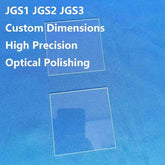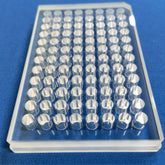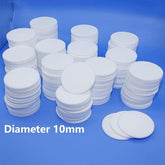Applications of quartz plates in aerospace technology
Quartz materials, owing to their distinctive physical and chemical characteristics, occupy a critical and irreplaceable position in aerospace applications. Quartz glass plates, primarily composed of silicon dioxide, exhibit exceptional purity, an extremely low coefficient of thermal expansion, outstanding resistance to high temperatures, superior optical transmittance, and excellent chemical stability. These properties render them highly suitable for use in precision instruments and key components operating under extreme environmental conditions. The following section presents a comprehensive multidimensional analysis of the applications and technical advantages of quartz glass plates in the aerospace industry.
1. Aerospace optical system
The correction optical system of the Hubble Space Telescope uses fused silica lenses, with a wavefront error of less than λ/20 (λ=632.8nm). Quartz glass plates have a transmittance of over 92% within the ultraviolet to near-infrared spectrum (185nm-2.5μm). In addition, quartz glass plates demonstrate superior radiation stability in comparison to standard optical glass. In a strong cosmic ray environment, the light transmittance attenuation rate of specially treated anti-radiation quartz glass plates can be controlled within 5%.
The filter substrate of satellite remote sensing cameras is typically synthetic quartz, with a birefringence of less than 5nm/cm, thereby ensuring the accuracy of chromatic aberration correction in multi-spectral imaging. The combination of quartz and aspheric lenses in the high-resolution lenses of Earth observation satellites has resulted in an impressive increase of over 40% in the MTF (Modulation Transfer Function) of the optical system.

2. Space communications technique
The optical antenna of the satellite laser communication terminal utilizes a zero-expansion quartz glass substrate, exhibiting a negligible dimensional change of less than 0.05μm/m·K within the temperature range of -150℃ to +150℃, thereby assuring the beam pointing accuracy to be greater than 1μ rad. The ultraviolet communication window of the deep space detector uses synthetic quartz doped with OH ions, which has an absorption coefficient of less than 0.1 cm⁻¹ at a wavelength of 121.6 nm (Lyman-α line).
3. Future development trend
The development of aerospace technology, particularly in the context of deep space exploration and reusability, has led to significant advancements in the field of quartz materials. These materials have shown remarkable progress in three dimensions. Firstly, the strength of nanostructured quartz fibres has been enhanced to the 7GPa level. Secondly, the radiation resistance of cerium-doped quartz glass plates has been increased by ten times. Thirdly, the forming accuracy of complex components of 3D-printed quartz ceramics reaches the 10 μm level. These advancements will drive quartz glass plates to play a more significant role in new fields, such as nuclear thermal propulsion and the construction of lunar bases.

In summary, the application of quartz glass plates in the aerospace industry has evolved from a single functional component to a system-level solution. The performance advantages of quartz glass plates are directly related to the reliability, accuracy and lifespan of aircraft. The development of material modification technology and precision manufacturing processes has opened up new possibilities for the use of quartz materials in future aerospace engineering applications.






